Emoticons
Part of a series on Internet Slang. [View Related Entries]
[View Related Sub-entries]
About
Emoticons are pictorial representations of facial expressions created with a mix of punctuation marks and letters. They can be used to depict the mood of the author or to influence how the reader interprets the surrounding text. Since their introduction in the early 1990s, emoticons have evolved from simple smiley faces (denoted as :-) ) to compound expressions that consist of characters from other languages and graphical images known as emoji.
Origin
ASCII Art, or the concept of turning letters and characters into pictures, has been around since at least 1966. However, the earliest known iteration of ASCII-based facial expression is the smiley face (represented as ":-)" to indicate sarcasm in the preceding statement) as proposed by ARPANET user Kevin MacKenzie[7] via MsgGroup mailing list on April 12th, 1979. The earliest recorded usage of the smiley face has been attributed to a post written by Scott Fahlman, submitted after a three day long discussion[18] on the Carnegie Mellon University computer science general message board about jokes and how to distinguish humor online:
I propose that the following character sequence for joke markers:
:-)
Read it sideways. Actually, it is probably more economical to mark
things that are NOT jokes, given current trends. For this, use
:-(
Fahlman took credit for inventing the “:-)” and “:-(” emoticons on his website.[8] Decades later, Fahlman stated in an April 2001 interview[9] that he created the smiley to better understand his peers, whose sarcasm on the message board was sometimes misread due to the lack of facial expressions or tone of voice. Meanwhile, the term “Emoticon,” a blending of the words “emotion” and “icon,” appeared in print publications for the first time in the New York Times on January 28th, 1990 and added to the Oxford English Dictionary (shown below) in its June 2001 print edition, followed by the first Urban Dictionary[1] definition submitted on October 1, 2002.

Pre-Internet
The practice of using shorthand to express emotion dates back to the 19th century with the invention of Morse code. According to the National Telegraphic Review and Operators Guide published in 1857, transmission of the number 73 meant “love and kisses.”[3] In 1881, prototypes of emoticons were featured in an instructional article titled "Typographical Art," published by humor magazine Puck.[6] Also in the 19th century, American journalist Ambrose Bierce wrote of a way to “improve punctuation” by using a \_/ to “represent a smiling mouth.”[4][5]
Spread
In 1990, a series of three dingbat[39] fonts known as Wingdings[40] were incorporated into Microsoft Windows. Though the fonts, which turn letters into glyphs, shapes and small pictures, were not necessarily meant to be used as emoticons, many AOL users used them to decorate their profiles.[41]

In the spring of 1991, author David W. Sanderson shared a list of smilies with the Electronic Frontier Foundation, who began hosting it on their website.[21] This compilation of 650 emoticons was turned into a book[22] published six years later. In 1992, Internet enthusiast James Marshall also began compiling a list of smilies on his personal website.[12] As of 2008, he had collected 2,231 different smileys. The first book on emoticons, titled Smiley Dictionary: Cool Things to Do with Your Keyboard[23] by author Seth Godin, was published in January 1993.
Graphical Smilies
As the use of emoticons grew, email and messaging services began to replace typographical smileys with small graphic renderings. AOL introduced a base set of 16 smileys in the 2000s.[10] These smilies, often with a yellow face, also began appearing in message board software as early as 2003.[24] MySmiley.net[25] was registered in March 2006, hosting a repository of graphical smilies with HTML and message board codes users could copy and paste to use the graphic. By 2007, Yahoo! Messenger had added to AOL's original set of smileys ones depicting yellow faces rolling on the floor, applause, "talk to the hand," and nailbiting.[11] As of 2012, graphical smilies also appear in messaging services like Skype[26] and Gchat.[27]

Eastern Emoticons
While Western emoticons require the reader to tilt their head sideways, Japanese-influenced smileys are read horizontally. These are often referred to as Kaomoji (顔文字 ), a blend of "face" (顔) and "writing" (文字).[28] These began appearing as early as May 1985[13], when "(~_~)" began appearing on the internet service ASCII Net. On January 13th, 1988, a Usenet member posted a series of Master Koalas, depicted as "(^O^)", to fj.questions.misc.[14] Later that year, a Hokkaido University student spotted a Master Koala "(^O^)" on the Usenet group fj.jokes, inspiring him to create several emoticons of his own, including "(^.^)" for laughing, "(;.;)" for crying and "(-.-)" to depict both sleeping and shock.

These emoticons evolved, mixing with western alphanumeric characters, yielding combinations such as "T_T" and ">_<". From there, users on image boards including 2channel and 4chan began mixing in characters with accents, "(õ_o)", or characters from languages that do not use the Latin alphabet, including " 囧 " and " ಠ_ಠ ". A collection of these types of textual smileys can be found at Evoticon[15], as well as repositories JapaneseEmoticons.net[29] and Emojicons[30], which provides descriptions for each emoticon.
Emoji
Like westernized graphical smilies, Japanese text began to incorporate a series of pictograph images known as emoji (絵文字), popularized by mobile phone messaging. Emoji were initially built into iPhone firmware 2.2, released in November 2008, but were only meant to be show up for users on the Softbank network in Japan. Five days after it was released, a guide[31] was published on how to make the Emoji keyboard appear on jailbroken iPhones in all countries. In December, a guide on how to unlock Emoji on a normal iPhone appeared online.[32] Apps revealing the Emoji began appearing in the iTunes Store before Apple issued a takedown order in February 2009[33], removing any app limited to enabling the Emoji keyboard. However, as of September 2012, there are 13 apps[34], both paid and free, that will unlock Emoji keyboards in the iTunes Store.
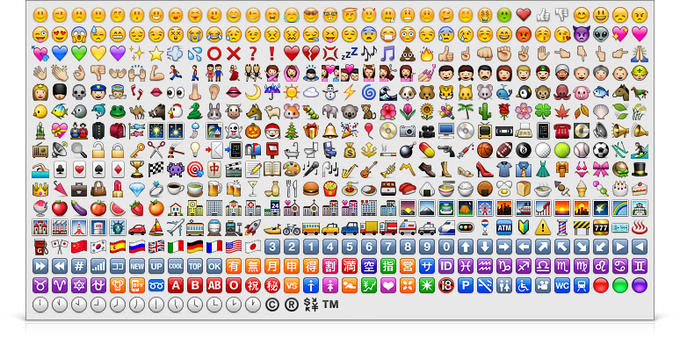
In October 2010, Unicode[38] released version 6.0, adding hundreds of Emoji symbols, after three years of requests from Google and Apple.[35] Apple's OS X Lion, released in July 2011, came with an Emoji character set[36] that was available to everyone, regardless of their location. In an interview[37] for the 30th birthday of the smiley face, Scott Fahlman called Emoji "ugly," stating that they "ruin the challenge of trying to come up with a clever way to express emotions."
Highlights
Emoji Art & Design Show
In December 2013, New York City's digital art collective Eyebeam announced an art and design show dedicated to the medium of Emojis, featuring original works in a wide range of mediums from digital prints and sculptures to video and performance art presented by 23 artists. The exhibition will be on display at the Eyebeam Art+Technology Center in Chelsea, Manhattan from December 12th to December 14th.



Related Memes
Western Origin
ಠ_ಠ, known as the Look of Disapproval, uses the letter “ṭha” from Kannada, one of the major Dravidian languages of India. Though it may have started on 2channel, it gained most of its popularity after it was imported to 4chan in May 2007.

Jesus Christ, It's a Lion, Get in the Car is a catchphrase that is often paired with the emoticon ">:3". This emoticon was reportedly created by deviantArt user Verdot who first illustrated it accompanied with the phrase "RAWR I AM A LION" in the summer of 2005.

¯\(°_o)/¯ depicts a person shrugging and is most often accompanied by the phrase "I dunno LOL" . Though it is unclear where the face originated, the first Urban Dictionary entry for the emoticon was submitted on November 9th, 2006.

The iPhone Whale is attributed to Tumblr user DaringCatastrophe, who posted a screenshot of a whale created with a period and several underscores in iPhone text bubbles. Within three days, the original post gained more than 240,000 notes and yielded both photoshopped images of the original emoticon as well as derivatives of the original using different characters and emoji.

SigSig Emoticon YTPs refers to a YouTube Poop video fad started by YouTuber Mowtendoo[1] in March 2012 which involves pairing up a video clip slowly zooming in on a subject’s face and the Beatmania track “SigSig” by the Japanese composer Kosuke Saito. The videos are typically titled after various ASCII emoticons that correspond with facial expressions worn by the subjects.
#EmojiArtHistory is a Twitter hashtag associated with various strings of emoji characters that are supposed to be reinterpretations of famous artworks throughout history. The idea for the hashtag came from a Tumblr post submitted by ladiesupfront on the evening of January 24th, which featured four iPhone screenshots of text messages sent from a friend who tried to recreate artistic masterpieces with emoji characters.



( ͡° ͜ʖ ͡°) is an emoticon created with unicode character symbols. The face is often used to spam discussion forums and image boards, similar to the Japanese word “desu”:/memes/desu. On 4chan, it has also come to be known as “Le Lenny Face” or “Le Face Face.”

"Raise Your Dongers" is a catchphrase coined by the League of Legends (LoL) player Michael Santana, better known by his online handle Imaqtipie, that is associated with the champion character Heimerdinger. Though its precise meaning is unclear, the phrase has since become frequently iterated in its emoticon form "ヽ༼ຈل͜ຈ༽ノ raise your dongers ヽ༼ຈل͜ຈ༽ノ."
Eastern Origin
囧 is a Chinese character that resembles a person with an open mouth. Though it originally meant "window," it is more commonly known as an emoticon in China, Taiwan, and Hong Kong. It is used to convey distress, helplessness, disappointment, reluctance, shock, dislike, defeat, embarrassment, and the like.

orz or OTL is an emoticon used to express one’s feeling of hopelessness in jest, often as a result of failure. The text visually represents a person kneeling on the ground with face down; “O” represents the head, “r” the arms and “z” the legs. In East Asian cultures, the shape of “Orz” resembles a body gesture that signifies frustration or feeling of despair, typically as a result of one’s own failure though it can be used to convey frustration towards others similar to facepalm.

Tuzki (Chinese: 兔斯基; Pinyin: Tùsījī) is a rabbit character used in emoticons, popular among Chinese internet users on forums, Tencent QQ, and MSN messenger. Its popularity has led to fanclubs, postcards, posters, t-shirts, books, games, cards, and more. The character can also be used with popular Chinese catchphrases by superimposing text onto Tuzki emoticons.








(╯°□°)╯︵ ┻━┻ is an emoticon depicting someone flipping over a table. Primarily used by East Asian internet users to express rage, the emoticon became popular among western internet users following its introduction through internationally popular online games including Starcraft and World of Warcraft. It has also inspired several variations, combining other horizontally read text-based emoticons with the table flip.
![tumblr_lpuvz325Vk1qe91vao1_500.png ↑ [-] masklinn 284 points 3 hours ago permalink parent report reply ↑ [-] Faps-Into-Socks 232 points 1 hour ago ノ(· ,' ノ) chill out bro permalink parent report reply [-] Horatio-Hornblower 190 points 1 hour ago permalink parent report reply ↑ [-] Faps-Into-Socks 123 points 1 hour ago DONT FLIP ME BRO](https://i.kym-cdn.com/photos/images/newsfeed/000/171/417/tumblr_lpuvz325Vk1qe91vao1_500.png)
The phrase 淡定 (very calm) became associated with the emoticon ˊ_>ˋ in May 2012 on the Taiwanese message board PPT after a user posted a recollection of watching a couple argue. While the woman was hysterical, the man sat there serenely drinking black tea.[42]

Search Interest
External References
[1] Urban Dictionary – Emoticon
[2] Merriam-Webster – Emoticon
[3] Google Books – SMS Language Quick Reference for Smartphones and Mobile Devices
[4] Google Books – The Collected Works of Ambrose Bierce
[5] GOOD – The Very Long History of Emoticons
[6] Wikipedia – Puck (magazine)
[7] Wikipedia – Emoticons – Pre-1980 antecedents
[8] Scott E. Fahlman – Smiley Lore :-)
[9] Bloomberg Businessweek – The Man Who Brought a :-) to Your Screen
[10] Elouai – AIM Smileys
[11] Digital Inspiration – Full List of Yahoo! Smileys or Emoticons for Yahoo Messenger
[12] James Marshall – The Canonical Smiley (And 1-Line Symbol List)
[13] What Japan Thinks – :-) turns 25 but how old are Japanese emoticons?(?_?)
[14] Google Groups Archive – Where's Smiley? (^_^)
[16] The Official Gmail Blog – New in Labs: Extra Emoticons
[17] Unicode.org – Emoji Symbols: Background Data
[18] The Atlantic – Today, the Emoticon Turns 30 :-)
[19] Wikipedia – Scott Fahlman
[20] Snopes – Glyph Notes
[21] EFF – All the Smileys in the Known Universe
[22] Amazon – Smileys Pocket Reference
[23] Barnes and Noble – Smiley Dictionary: Cool Things to Do with Your Keyboard
[24] phpBB – Yellow Smilies Pack
[26] Factory Joe – Skype Emoticons Cheatsheet
[27] The Geek Whisperer – Special Gchat Smilies
[28] MarkyStar – KAOMOJI – Japanese Smileys
[29] Japanese Emoticons – Home
[31] simonblog – How to Enable Emoji Icons on iPhone 2.2
[32] simonblog – Enable Emoji Icon on iPhone 2.2 without Jailbreak
[33] Ars Technica – Apple issues App Store-wide Emoji take-down order
[34] iTunes – Search results for "emoji"\
[36] OS X Daily – Access and Use Emoji in Mac OS X Lion
[37] Huffington Post – Scott Fahlman, Inventor Of The Emoticon, Calls Emoji 'Ugly' :'-(
[38] Unicode – Emoji and Dingbats FAQ
[41] CosmicCat – Using picture fonts in your AOL profile
[42] Baidu – 【ˊ_>ˋ】淡定 红茶
[43] Emoji Show – Emoji Art & Design Show








![Emoticon Tier List by @vonasterrors A C :3 3: v¯v d: XD ΛΛ :D T_T vMv :: B ΛΛ D :3c :d >:3 >: O_o -- :> O_O D: ;w; T.T ^....^ 9x49 V V V V V C: :0 :C:{ :0 :[ ]: )))))))): :/ :( B) :} :) ;) :-) :U >W< //w/// D= =D OWO //w/// S: Λ :] >.< <>< :J uwu](https://i.kym-cdn.com/photos/images/list/002/782/981/d2e)
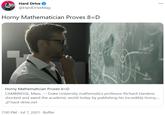
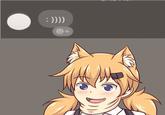
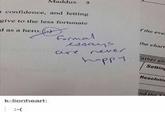
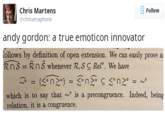
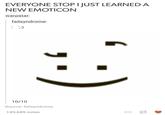
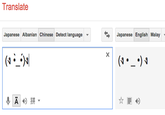

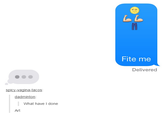


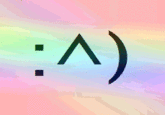
Top Comments
Lukeinator Dude
Sep 30, 2013 at 09:29AM EDT
cowlu
Aug 21, 2012 at 05:58PM EDT